Margaret Duff
An Iterative Feedback Mechanism for Improving Natural Language Class Descriptions in Open-Vocabulary Object Detection
Mar 21, 2025Abstract:Recent advances in open-vocabulary object detection models will enable Automatic Target Recognition systems to be sustainable and repurposed by non-technical end-users for a variety of applications or missions. New, and potentially nuanced, classes can be defined with natural language text descriptions in the field, immediately before runtime, without needing to retrain the model. We present an approach for improving non-technical users' natural language text descriptions of their desired targets of interest, using a combination of analysis techniques on the text embeddings, and proper combinations of embeddings for contrastive examples. We quantify the improvement that our feedback mechanism provides by demonstrating performance with multiple publicly-available open-vocabulary object detection models.
An Application-Agnostic Automatic Target Recognition System Using Vision Language Models
Nov 05, 2024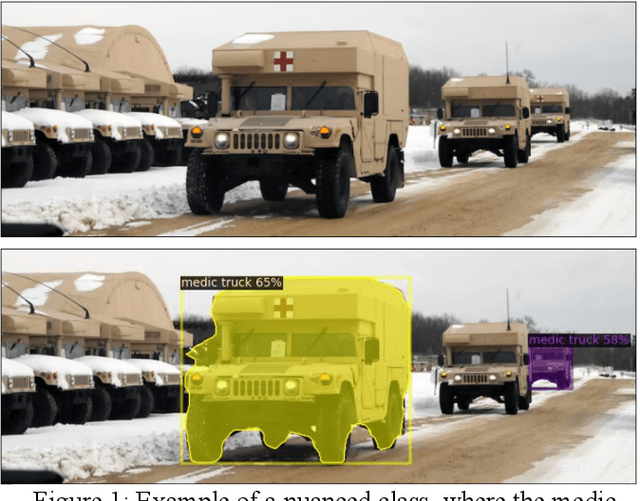
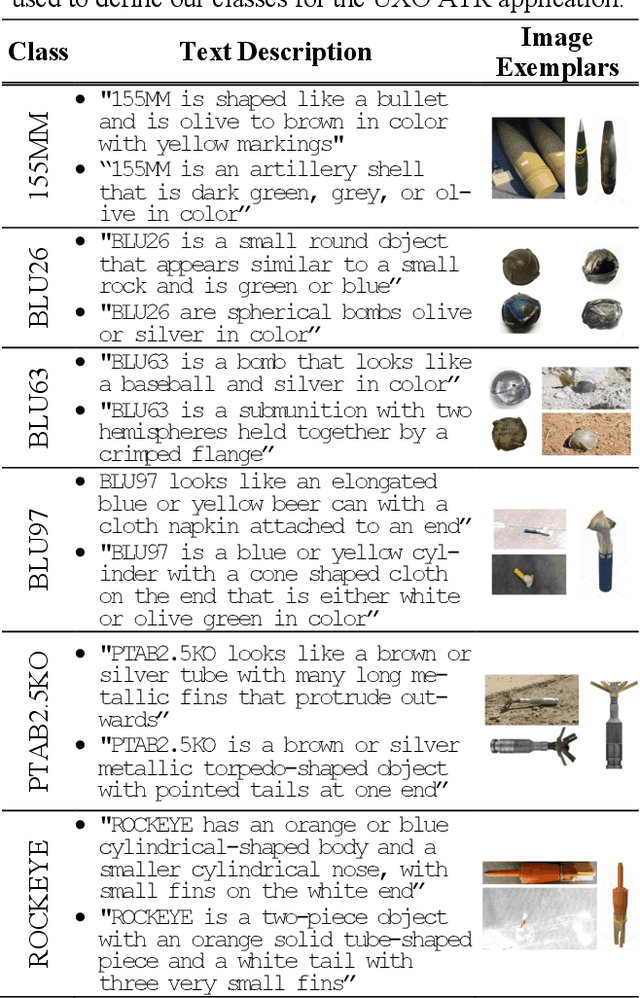
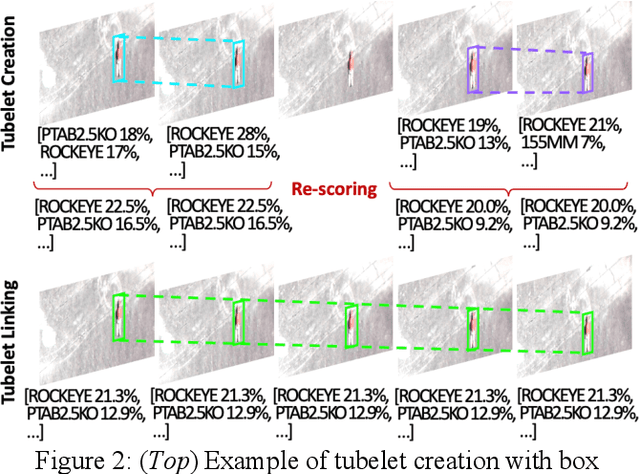
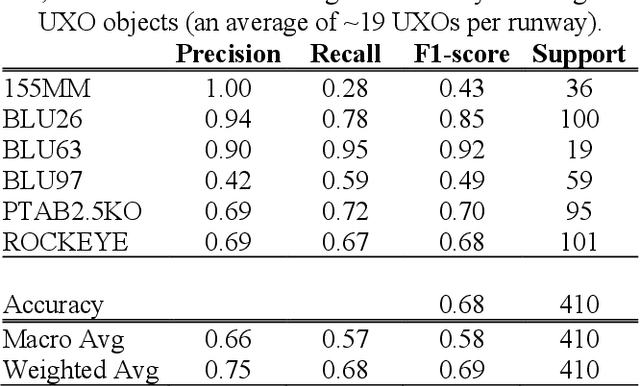
Abstract:We present a novel Automatic Target Recognition (ATR) system using open-vocabulary object detection and classification models. A primary advantage of this approach is that target classes can be defined just before runtime by a non-technical end user, using either a few natural language text descriptions of the target, or a few image exemplars, or both. Nuances in the desired targets can be expressed in natural language, which is useful for unique targets with little or no training data. We also implemented a novel combination of several techniques to improve performance, such as leveraging the additional information in the sequence of overlapping frames to perform tubelet identification (i.e., sequential bounding box matching), bounding box re-scoring, and tubelet linking. Additionally, we developed a technique to visualize the aggregate output of many overlapping frames as a mosaic of the area scanned during the aerial surveillance or reconnaissance, and a kernel density estimate (or heatmap) of the detected targets. We initially applied this ATR system to the use case of detecting and clearing unexploded ordinance on airfield runways and we are currently extending our research to other real-world applications.
Stochastic Optimisation Framework using the Core Imaging Library and Synergistic Image Reconstruction Framework for PET Reconstruction
Jun 21, 2024Abstract:We introduce a stochastic framework into the open--source Core Imaging Library (CIL) which enables easy development of stochastic algorithms. Five such algorithms from the literature are developed, Stochastic Gradient Descent, Stochastic Average Gradient (-Am\'elior\'e), (Loopless) Stochastic Variance Reduced Gradient. We showcase the functionality of the framework with a comparative study against a deterministic algorithm on a simulated 2D PET dataset, with the use of the open-source Synergistic Image Reconstruction Framework. We observe that stochastic optimisation methods can converge in fewer passes of the data than a standard deterministic algorithm.
Compressed Sensing MRI Reconstruction Regularized by VAEs with Structured Image Covariance
Oct 26, 2022Abstract:Learned regularization for MRI reconstruction can provide complex data-driven priors to inverse problems while still retaining the control and insight of a variational regularization method. Moreover, unsupervised learning, without paired training data, allows the learned regularizer to remain flexible to changes in the forward problem such as noise level, sampling pattern or coil sensitivities. One such approach uses generative models, trained on ground-truth images, as priors for inverse problems, penalizing reconstructions far from images the generator can produce. In this work, we utilize variational autoencoders (VAEs) that generate not only an image but also a covariance uncertainty matrix for each image. The covariance can model changing uncertainty dependencies caused by structure in the image, such as edges or objects, and provides a new distance metric from the manifold of learned images. We demonstrate these novel generative regularizers on radially sub-sampled MRI knee measurements from the fastMRI dataset and compare them to other unlearned, unsupervised and supervised methods. Our results show that the proposed method is competitive with other state-of-the-art methods and behaves consistently with changing sampling patterns and noise levels.
Regularising Inverse Problems with Generative Machine Learning Models
Jul 22, 2021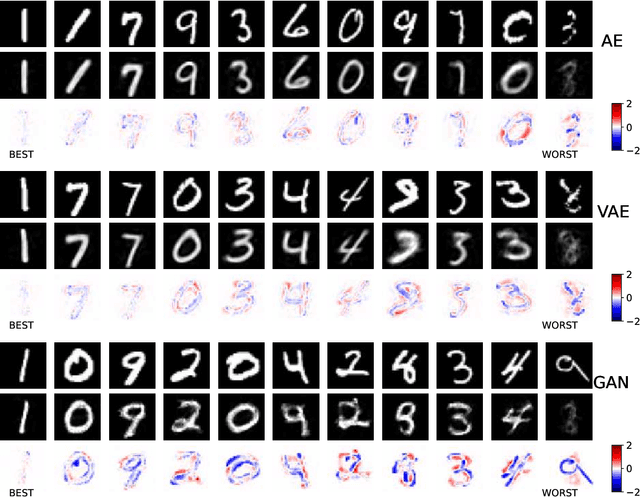
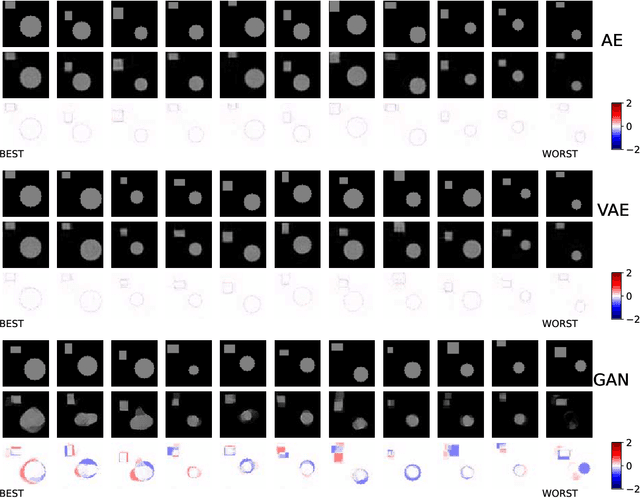
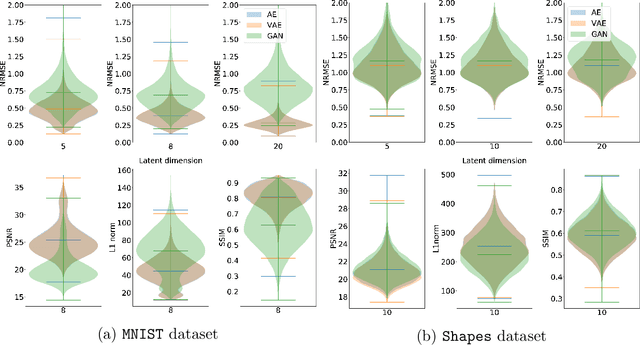
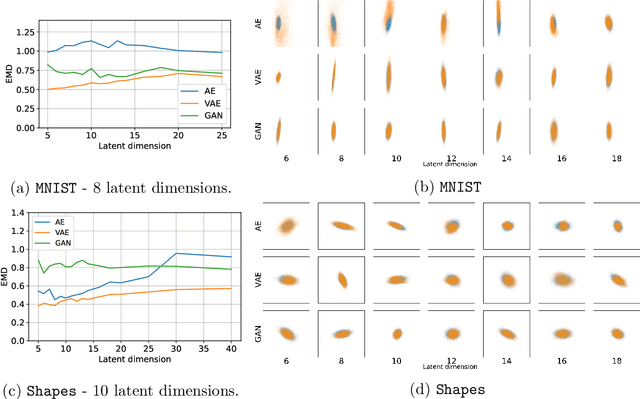
Abstract:Deep neural network approaches to inverse imaging problems have produced impressive results in the last few years. In this paper, we consider the use of generative models in a variational regularisation approach to inverse problems. The considered regularisers penalise images that are far from the range of a generative model that has learned to produce images similar to a training dataset. We name this family \textit{generative regularisers}. The success of generative regularisers depends on the quality of the generative model and so we propose a set of desired criteria to assess models and guide future research. In our numerical experiments, we evaluate three common generative models, autoencoders, variational autoencoders and generative adversarial networks, against our desired criteria. We also test three different generative regularisers on the inverse problems of deblurring, deconvolution, and tomography. We show that the success of solutions restricted to lie exactly in the range of the generator is highly dependent on the ability of the generative model but that allowing small deviations from the range of the generator produces more consistent results.
 Add to Chrome
Add to Chrome Add to Firefox
Add to Firefox Add to Edge
Add to Edge